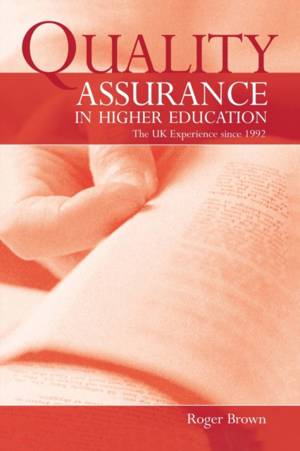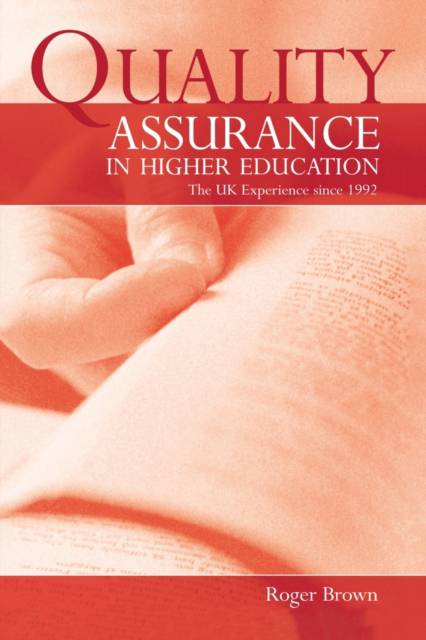
- Afhalen na 1 uur in een winkel met voorraad
- Gratis thuislevering in België vanaf € 30
- Ruim aanbod met 7 miljoen producten
- Afhalen na 1 uur in een winkel met voorraad
- Gratis thuislevering in België vanaf € 30
- Ruim aanbod met 7 miljoen producten
Zoeken
€ 86,95
+ 173 punten
Uitvoering
Omschrijving
Along with funding, quality assurance has become one of the major issues in higher education today. This text provides an analytical account of the changes to quality assurance of UK universities and colleges from 1992 to 2003. It documents the shift from institutional self-regulation to increased involvement of the state and examines the accompanying debate about the purposes, forms and ownership of quality assurance, as well as a wider consideration of the best means of regulating professional activities. All the key developments and issues of quality assurance are covered, including: * the background to the current debates * the evolution of the post-1992 regime * the role of the Higher Education Quality Council (HEQC) * changes to assessment and the creation of a single system * the formation and likely evolution of the Quality Assurance Agency (QAA). Roger Brown writes with an authority derived from his varied experiences in quality assurance. He argues that the external quality regime to date has provided poor value for money, and draws from the lessons learnt during the 1990s to assess the conditions required for effective regulation.
Specificaties
Betrokkenen
- Auteur(s):
- Uitgeverij:
Inhoud
- Aantal bladzijden:
- 218
- Taal:
- Engels
Eigenschappen
- Productcode (EAN):
- 9780415511346
- Verschijningsdatum:
- 28/11/2011
- Uitvoering:
- Paperback
- Formaat:
- Trade paperback (VS)
- Afmetingen:
- 156 mm x 234 mm
- Gewicht:
- 312 g

Alleen bij Standaard Boekhandel
+ 173 punten op je klantenkaart van Standaard Boekhandel
Beoordelingen
We publiceren alleen reviews die voldoen aan de voorwaarden voor reviews. Bekijk onze voorwaarden voor reviews.











